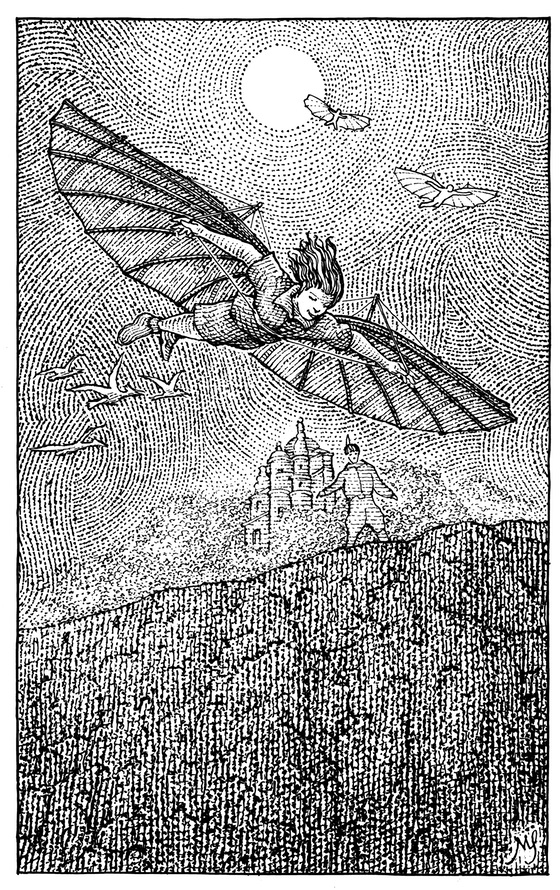Whether you’re Buddhist, Christian, atheist, or anything in between, you take part in one of nature’s most amazing experiences: you dream.
Dreams have fascinated us since the beginning of time. They have always been a part of humanity’s story, guiding us in nearly every field of endeavor. They have been studied, worshipped, and practiced by nearly every culture throughout history.
In modern times, dreams have been responsible for at least two Nobel Prizes, incredible scientific breakthroughs, invaluable inventions, novels, works of art, and many other discoveries.
Elias Howe dreamed of being attacked by cannibals. He took note of the cannibals’ spears, which had holes near the sharp tips. Howe applied this concept to the design of his sewing machine. The periodic table of elements was said to have come to the Russian chemist Dmitri Mendeleev during a dream. Abraham Lincoln, Mark Twain, and Mary Shelley were all influenced by dream events. Whether you’re famous or not, dreams are an important part of your life and a source of power, inspiration, and guidance.
With your eyes closed and the outside world cut off, you travel to another world just as real and vivid as your waking life. It’s here that you reenact your day, project into the future, remember the past, go on adventures, visit strange lands, see old friends, and greet past lovers. It’s a destination that knows neither space nor time, where thoughts and emotions are instantly reflected back to you and a focused intention can take you anywhere you’d like to go at the speed of thought. Your dreams are a place of pure potential, one that can be a playground for living out your wildest fantasies or a springboard for diving deeper into understanding yourself.
 But many of us have lost touch with these nighttime explorations. Although we’re still dreaming every night, many of us have a hard time remembering these experiences come morning. The dreams that we do remember often seem obscure and strange, covered by a gray sheen of haziness. It’s nothing to feel guilty about; our society hasn’t taught us to prioritize dreaming. We’ve forgotten that it can be an active, practical, and beautiful experience, an entire chapter of our daily lives.
But many of us have lost touch with these nighttime explorations. Although we’re still dreaming every night, many of us have a hard time remembering these experiences come morning. The dreams that we do remember often seem obscure and strange, covered by a gray sheen of haziness. It’s nothing to feel guilty about; our society hasn’t taught us to prioritize dreaming. We’ve forgotten that it can be an active, practical, and beautiful experience, an entire chapter of our daily lives.
Do not fret. Since dreaming is a natural ability, it’s very easy to plug back into the dream world through the experience of lucid dreaming. A lucid dream is simply the realization that you’re dreaming while in a dream: “Wait a minute! I’m dreaming right now!” This realization often comes about when you notice a trigger, something unusual that makes you stop and question your reality.
Pretend for a second that you’re sitting on a park bench, enjoying a cucumber sandwich. Looking around, you notice that the people in the park are starting to float. They climb higher, dangling ten feet off the ground. Ah-ha! The moment of lucidity. This is a dream.
Okay, so you’re aware that you’re dreaming. Now what? The simple answer is: anything. Imagine this: you put down your cucumber sandwich, brush the crumbs off your lap, and stand up. There’s the obvious choice, which never ceases to be exhilarating: you jump into the air and take flight, rushing through clouds as you observe the dream world from above. Or you can use this chance to practice your painting skills, filling a canvas with colors that materialize from your thoughts. Maybe you’d rather do some soul searching: you walk up to a dream character, a tall man with wise eyes, and begin asking him questions. “Do you represent something important?” “Am I in the right career?” “How can I be less anxious?” When the tall man speaks, you’re surprised at the wisdom of his answers.
Or perhaps you became lucid as a nightmare is chasing you through a post-apocalyptic city. Now that you’re armed with conscious awareness in your dream, you decide to face that nightmare head-on and heal that dark corner of your inmost mind.
If you’ve ever had a lucid dream before, you may have an idea how this unique state of awareness can open up incredible opportunities for discovery, healing, and growth. The idea is not new: Tibetan Buddhists have practiced lucid dreaming for at least a thousand years, referring to it as dream yoga. Dreams often act like mirrors, presenting you with a reflection of yourself. By becoming conscious in your unconscious, you’re able to explore and deepen the connection to your own inner world.
The conscious experience of lucid dreaming can give us a different idea of what reality is. In a dream, we’re constantly creating and shaping our surroundings with our thoughts and feelings. When we begin to consciously influence our dreams, we realize that the same dream-creating principles apply to our waking lives as well. This is the heart of lucid dreaming—the present-moment awareness of the dream world.
This November on tricycle.com/retreats, our three dream experts will walk us through three stages: how to remember our dreams, how to bring more clarity to them, and ultimately, what we can do with this unique state of awareness.